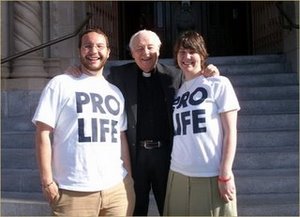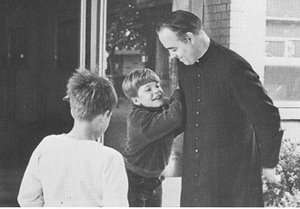Robert Rector of The Heritage Foundation is a national authority on poverty and the U.S. welfare system. Specializing in welfare reform and family breakdown, Rector has done extensive research on the economic and social costs of welfare.
This post reflects some of his comments on this burning issue:
John Edwards and others lament that 37 million Americans struggle with incredible poverty every day.When such a statement is made the average citizen is led to believe that one in eight do not have enough money for adequate, food or shelter or clothing.
With presidential candidates of a certain hue decrying the suffering of the 37 million Americans who have been officially classified as poor by the U.S. Census Bureau, Rector was asked if these poor people are really as poverty-stricken as we have been led to believe:
Q: You say it is not so simple or accurate to think of them as truly poor. What do you mean?
A, When you look at the people John Edwards and others insist are poor, what you find is that the overwhelming majority of them have cable television, have air conditioning, have microwaves, have two color TVs; 45 percent of them own their own homes, which are typically three-bedroom homes with 1{1/2} baths in very good recondition. On average, poor people who live in either apartments or in houses are not crowded and actually have more living space than the average person living in European countries, such as France, Italy or England.
Also, a lot of people believe that poor people are malnourished. But in fact when you look at the average nutriment intake of poor children, it is virtually indistinguishable from upper-middle-class children. In fact, poor kids by the time they reach age 18 or 19 are taller and heavier than the average middle-class teenagers in the 1950s at the time of Elvis. And the boys, when they reach 18, are a full one inch taller and 10 pounds heavier than the GIs storming the beaches of Normandy. It’s pretty hard to accomplish that if you are facing chronic food shortages throughout your life.
If you are looking at people who do not have adequate warm, dry apartments that are in good repair, and don’t have enough food to feed their kids, you’re probably looking at one family in 100, not one family in eight.
Since the beginning of the War on Poverty we have now spent over 11 trillion dollars.
Q: Where did that money go -- and who got it?
A: Basically, we have spent a lot of money but we spent money in such a way that we displaced the work effort of the poor, so that we did not get very much net increase in income. Rather than bringing people’s incomes up, what we’ve done is supplanted work with welfare. What you need to do in order to truly get improvements is to create a welfare system that requires work and encourages marriage so that the recipient is moving toward self-sufficiency while receiving aid, rather than receiving aid in lieu of his own work efforts.
Q: Who are these “truly poor” and where do they live?
A: Generally, they will be families that have a whole lot of behavioral issues in addition to mere economic issues -- possibly drug problems, mental problems, certainly very low work effort, probably unmarried mothers and so forth. They would be spread around the country. Very few of them are elderly. Even though the elderly appear to have low incomes, they are not likely to lack food or to have a hole in their roof or things like that.
Q: Is there any single reason why the “official poor” are poor?
A: If you look at the official poor, particularly at children who are officially in poverty, there are two main reasons for that. One is that their parents don’t work much. Typically in a year, poor families with children will have about 16 hours of adult work per week in the household. If you raised that so that you had just one adult working full time, 75 percent of those kids would immediately be raised out of poverty.
The second major reason that children are poor is a single parenthood in the absence of marriage. Close to two-thirds of all poor children live in single-parent families. What we find is that if a never-married mother married the father of her children, again, about 70 percent of them would immediately be raised out of poverty. Most of these men who are fathers without being married in fact have jobs and have a fairly good capacity to support a family.
Friday, October 5, 2007
Subscribe to:
Post Comments (Atom)















1 comment:
I am wee bit disheartened to find this blog. Another news story referenced this blogsite and I navigated to it. It strikes me as very sad that a blogger who identifies himself as "85 years *young*"does not offer more hopeful messages. In reading through these postings, I felt very sorry for this man, *presumably*, who served in seemingly prestigious roles in the Church. I would expect more from someone who had a leadership role, seems to have a real affinity for working with young people, and has a cat which commands some tenderness. If the blogger could restructure his musings to be more hopeful, the future would not be so bleak and dismal. I guess also I am feeling a little befuddled as to why he is lamenting and lambasting this generation. As a chronologically young person, I am wondering if this older/younger man does not realize that it was he that created the situation we are in. In the end, forgo bitterness, vitriole, and sarcasm. Make the last years of life imbued with more hope for you and all of us. Oremus pro invicem!
Post a Comment